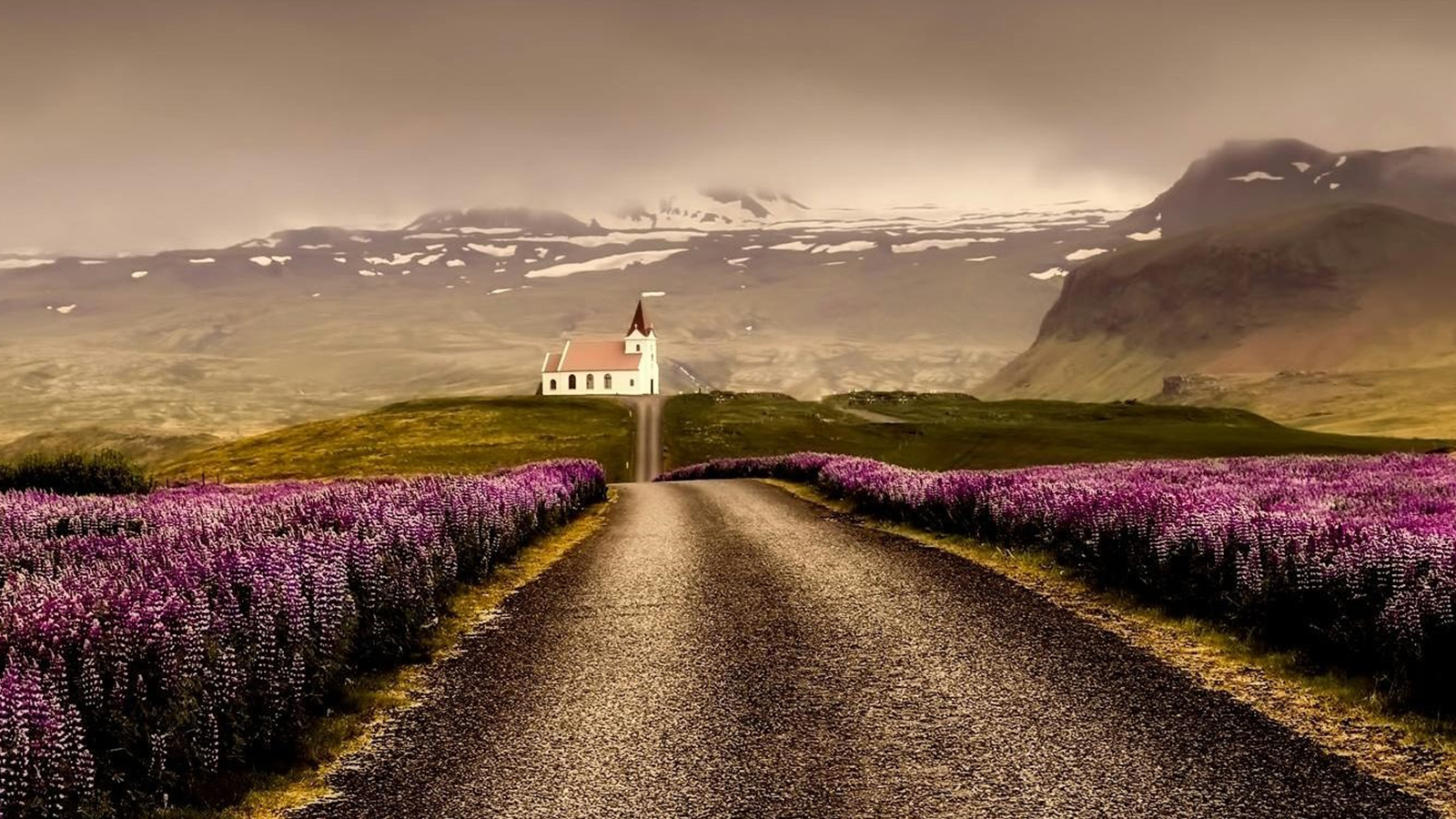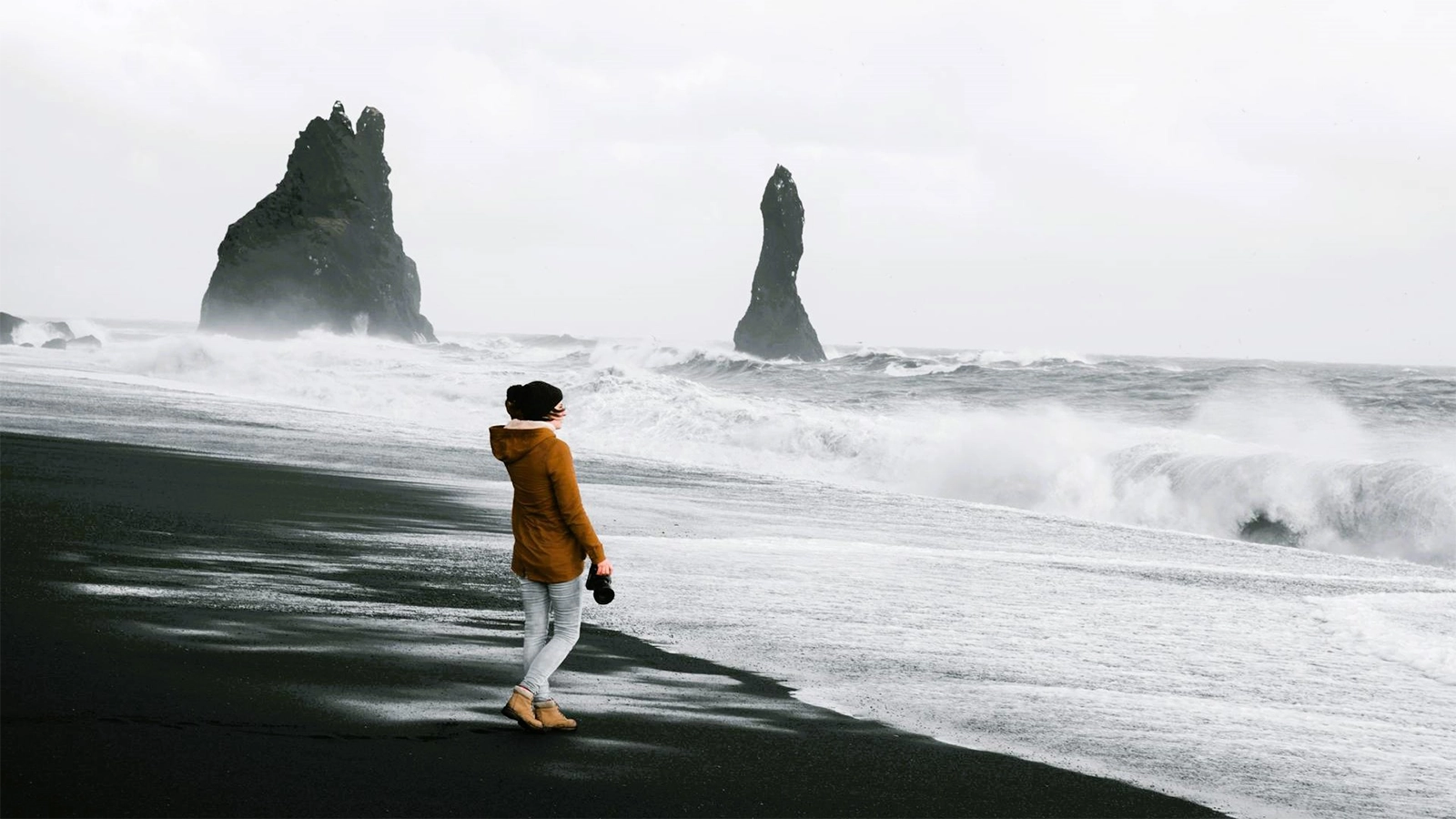There’s a place in Iceland where volcanoes wear glacier caps, beaches hum with legend, and trolls might still be watching over the coastline. Welcome to Snæfellsnes Peninsula, that seems to hold all the magic of the island in one compact corner.
Often called “Iceland in Miniature”, Snæfellsnes is far more than just a highlight reel of waterfalls, black beaches, and lava fields. It’s a region rich in stories, strange happenings, and natural oddities: a place where the line between geology and mythology feels beautifully blurred.
At EastWest, we love guiding travellers through Snæfellsnes not just for the scenery, but for little-known legends that bring the landscape to life.
So if you’re planning a visit (or just dreaming of one), here are some of our favourite Snæfellsnes Peninsula Curiosities to inspire your journey. Some are historical, others are downright mythical… but all of them are unforgettable.
1. The Mystical Power of Snæfellsjökull Glacier
Snæfellsjökull has long been surrounded by legends. Some believe it’s a source of mystical energy, one of Earth’s “power centers” where the spiritual and physical worlds overlap. Others say it’s a sacred mountain, home to ancient spirits or guardians. On clear days, it’s visible from Reykjavík, over 100 km away, as if reminding everyone of its quiet power.
But the glacier’s most famous claim to fame comes from literature.
In 1864, French author Jules Verne published Journey to the Centre of the Earth, and it all begins right here. In the novel, Professor Otto Lidenbrock deciphers an ancient runic message that leads him to believe the entrance to the Earth’s core lies at the top of Snæfellsjökull. Along with his nephew and their Icelandic guide, they descend into the volcano and begin an epic subterranean adventure filled with prehistoric monsters, underground seas, and glowing crystals.
Verne had never actually visited Iceland when he wrote the novel, but his descriptions captured the imagination of readers around the world, and Snæfellsjökull became a gateway to the unknown.
Today, visitors still feel the magic. Standing at the base of the glacier, it’s easy to imagine secret passages hidden beneath the ice and to picture Verne’s explorers vanishing into the earth. Scientists may tell us the volcano hasn’t erupted in nearly 2,000 years, but stories like Verne’s have kept it alive in the minds of travellers ever since.
Whether you’re a lover of literature, a believer in hidden energies, or just someone who loves a good view, Snæfellsjökull is a portal to wonder.
Legend has it: those who hike near the glacier might feel recharged, enlightened… or at least refreshed by the sea breeze.
2. A Volcano with a Time-Travel Reputation
In 1993, thousands of spiritual seekers from around the world gathered around Snæfellsjökull. Why? A rumour spread that aliens would land on the glacier and offer to take selected humans on a journey through space and time. (Spoiler: the spaceship never showed up, but the mountain still has an undeniable pull.)
3. Christopher Columbus… in Iceland? A Curious Theory in a Tiny Church
At the western tip of Snæfellsnes, not far from the old farmstead of Ingjaldshóll, stands a small red-roofed church called Ingjaldshólskirkja. It’s charming and photogenic, but also hides one of the most unexpected stories on the peninsula.
According to a fascinating theory, Christopher Columbus may have visited this part of Iceland in the 1470s, long before his famous voyage to the Americas. Some researchers believe he travelled here to gather knowledge from the Norse seafarers, who had already reached North America centuries earlier.
Inside the church, which was rebuilt in 1903 on much older foundations, you’ll even find paintings depicting Columbus in Iceland, based on this historical possibility. It’s one of those tales that mixes legend, local pride, and just enough historical intrigue to make you wonder: what if?
4. The Four Lifting Stones of Djúpalónssandur: A Test of Strength and Pride
Before you even set foot on the black-pebbled beach of Djúpalónssandur, your eye might catch something unusual: four large, weathered stones resting near the entrance to the beach. They’re not just random boulders. These are the legendary lifting stones, once used to test the strength of fishermen who worked from the cove.
Each stone has a name and a weight, and each one represented not just brute force, but your value as a worker:
- Fullsterkur (“Fully Strong”) – 154 kg
- Hálfsterkur (“Half-Strong”) – 100 kg
- Hálfdrættingur (“Weakling”) – 54 kg
- Amlóði (“Useless”) – 23 kg
To be considered fit for work on the boats, you needed to lift at least the Hálfdrættingur onto a ledge at hip height. Fail to do so, and you weren’t much use at sea.
It’s easy to miss the meaning behind these stones if you don’t know the story, but for centuries, they were a serious matter. They separated the strong from the not-so-strong, and they were part of a working culture where endurance meant survival.
Today, visitors often try their luck lifting one (though you’ll want to bend your knees and use good form!). It’s a fun tradition and a fascinating insight into the toughness of Iceland’s past.
5. The Shark Sheds of Bjarnarhöfn
If your nose catches something… pungent in the air, you might be near one of Snæfellsnes’ most curious culinary traditions. In Bjarnarhöfn, visitors can explore the Shark Museum, where you’ll learn the full story of how hákarl is made. It starts with the Greenland shark, a deep-sea species whose flesh is toxic when fresh. Icelanders found a solution: they buried the meat underground for weeks to allow toxins to leach out, then hung it in drying sheds to ferment and cure in the sea air.
The result? A chewy, tangy, strong-smelling product that has been a part of Icelandic survival and culture since Viking times. Today, it’s considered a rite of passage for curious visitors, and you’ll even get to taste it at the museum (pro tip: chase it with a shot of Brennivín, Iceland’s signature schnapps).
The museum is run by descendants of a long line of shark fishermen, and you’ll often find one of them guiding visitors through the process, always with a mix of humour and pride. You can also step into the shark-drying sheds, where dozens of thick, leathery strips of meat hang from wooden rafters, slowly curing in the salty breeze.
Whether you find hákarl fascinating or revolting (many do both), Bjarnarhöfn offers one of the most curious and authentic cultural encounters in Snæfellsnes, and a direct link to how Icelanders adapted to life in a harsh land with few resources.
6. The Friendly Giant of Bárðarlaug
In the quiet village of Hellnar, there’s a crater lake named Bárðarlaug, said to be where Bárður Snæfellsás (half-man, half-troll, and now a local guardian spirit) bathed after settling in the area. You can find a statue of him watching over Arnarstapi. He’s not scary, though. Think of him as Snæfellsnes’ ancient protector.
7. Axlar-Björn: Iceland’s Only Serial Killer (and His Disturbing Legacy)
It’s not all giants, elves and glaciers on Snæfellsnes… Some stories are much darker.
In the 16th century, a man named Björgólfur Axelsson, better known as Axlar-Björn, lived on a farm near Hellissandur. On the surface, he was just another farmhand. But he harboured a grim secret: he lured travellers to his property and murdered them.
Over time, suspicions grew as more and more people vanished. Eventually, the truth came out: Axlar-Björn had killed at least 9 people, possibly more. He was executed by hanging and then broken on the wheel (a rare and brutal punishment in Icelandic history).
The eerie part? His descendants reportedly continued to cause trouble for generations, earning the nickname “the cursed family.” Even today, some locals say bad luck follows that bloodline.
This grim tale still echoes across Snæfellsnes and adds a chilling twist to the otherwise peaceful landscape.
8. Kirkjufell: the Arrowhead Mountain
You’ve probably seen it already, whether you realise it or not. Kirkjufell Mountain is one of the most photographed landscapes in Iceland.
In Icelandic, its name means “Church Mountain,” because it resembles the steeple of a church. Yet thanks to its striking shape, many know it now as “Arrowhead Mountain”, the nickname it earned after appearing in HBO’s Game of Thrones. It was featured as a key landmark in the series, recognised by characters during visions beyond the Wall.
That’s modern fame. But long before Hollywood, Kirkjufell was a sacred spot in local folklore. Some believed it was a gathering place for witches on Midsummer Night. Others said it was a gateway to the hidden world of elves and spirits.
9. An Underground Lava Cathedral
Vatnshellir Cave offers a descent into an 8,000-year-old lava tube. Walking through its tunnel is like stepping into another world (eerie, silent, and lit only by your flashlight). It’s said that trolls might have used it as a meeting hall. Whether that’s true or not, it certainly feels otherworldly.
10. The Ship That Was Swallowed by Lava
Near Búðir, look closely and you’ll see a memorial to a ship that was engulfed by lava during an eruption centuries ago. It’s one of many stories where fire and sea meet dramatically: a reminder of how Iceland’s natural forces shape everything here, even maritime history.
One Peninsula, Endless Stories
We believe that Snæfellsnes is a journey through time, myth, and elemental beauty. It’s where ancient sagas echo across lava fields, where fishermen once proved their worth with a single lift. And where trolls, spirits, and even time travellers are said to have walked.
Every stop reveals something different: a story whispered by the wind, a tradition preserved in shark meat, a glacier that inspired the imagination of Jules Verne. And just when you think you’ve seen it all, the peninsula surprises you again with a hidden cave, a windswept church, or a quiet beach humming with legend.
At EastWest, we believe the best way to experience Snæfellsnes is to go beyond the surface. Join one of our small-group tours, and we’ll share the stories, the scenery, and a warm homemade meal. Because a place like this deserves to be savoured slowly, with locals who love it.



